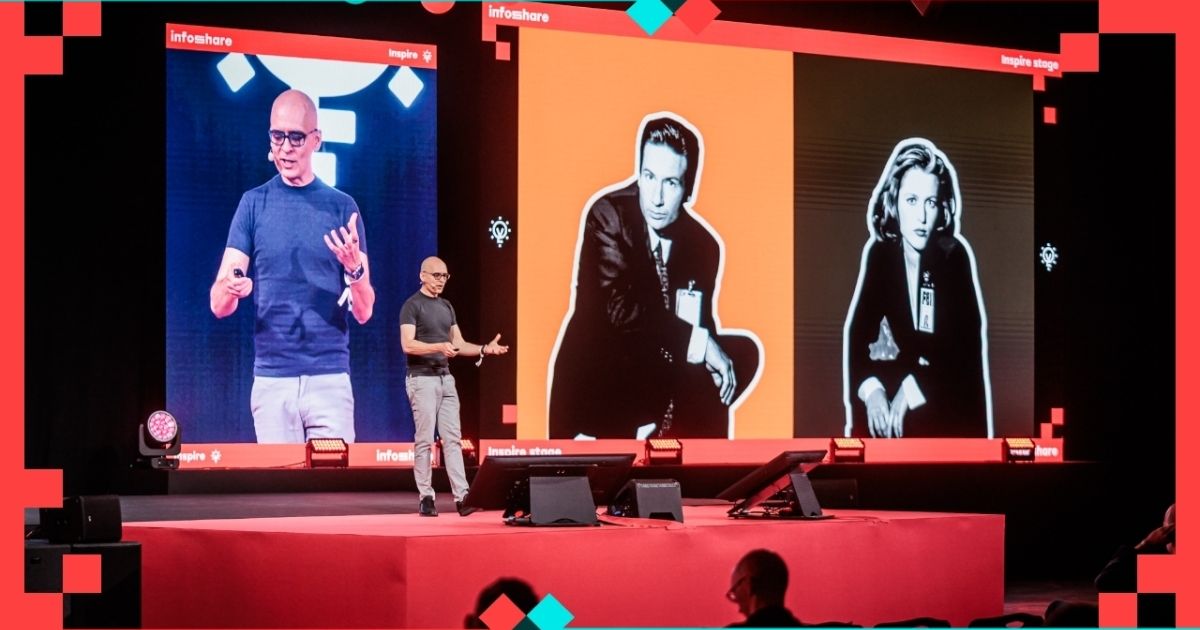VIEW SPEECH SUMMARY
- Jensen Huang’s statement about wishing pain and suffering relates to the concept of the "gap," where discomfort and conflict exist between desires and reality.
- Influences from Stoic philosophy (Seneca, Marcus Aurelius) emphasize embracing suffering as a path to growth.
- Vulnerability fuels creativity and innovation (highlighted by Brene Brown).
- The "gap" is visualized as a space or conflict one must navigate, not immediately bypass or bridge.
Internal Conflicts and Dual Mindsets
- Humans often experience internal conflict between opposing modes:
- Philosopher (intuitive, idea-driven) vs. Opportunist (rational, action-oriented).
- Examples include cultural references like Yoda vs. Spock, Mulder vs. Scully.
- Both sides have strengths: Philosophers see the big picture; Opportunists excel at details and quick adaptation.
- Embracing this split internally and externally (e.g., in teams) is beneficial for innovation and problem-solving.
The Transcendent Function and Holding Tension
- Carl Jung’s concept of the transcendent function describes creatively resolving internal conflicts by holding the tension rather than rushing to resolution.
- Holding discomfort and tension leads to the emergence of new, creative solutions.
- The "third brain" metaphor represents the ability to integrate opposing viewpoints simultaneously.
- Avoid shortcuts like overusing frameworks to eliminate discomfort; instead, engage deeply with conflict to unlock intuition and true creativity.
Impact of Modern Society and Distractions
- Modern society often encourages avoiding discomfort by chasing distractions (social media, streaming, quick fixes).
- These distractions prevent individuals from fully experiencing and benefiting from the gap.
- The speaker warns against "filling the gap" prematurely or numbing discomfort, as it blocks access to deeper insights.
Actionable Items / Tasks:
- Invite and welcome conflict and discomfort in both personal and professional realms.
- Allow internal and external dialogues where contradictory perspectives coexist.
- Resist the urge to immediately resolve discomfort with easy solutions or frameworks.
- Make space to hold tension and feel the discomfort as a path to creativity and breakthrough.
- Recognize and balance both philosopher and opportunist mindsets within yourself and your team.
- Avoid distractions that fill the gap and impair deep reflection.
- Use discomfort intentionally to enhance intuition, creativity, and innovation.
The Power of Discomfort: How to Thrive in Chaos and Conflict
10:00 - 10:20, 28th of May (Wednesday) 2025 / INSPIRE STAGE
In today's tech landscape, chaos and conflict aren't obstacles to avoid—they're competitive advantages to embrace. This keynote challenges the conventional wisdom that stability equals success, revealing how the most innovative leaders actively seek out and leverage disruption.
Drawing from thousands of hours coaching founders and executives, Matteo shares how today's tech pioneers are rewiring their relationship with discomfort to drive breakthrough innovation. You'll discover why there's no such thing as a polite troublemaker and how balancing empathy with the courage to ruffle feathers becomes essential when changing the world.
Through compelling case studies and actionable frameworks, you'll learn how to:
- Transform organizational resistance into momentum for change
- Build genuine confidence that withstands high-stakes decisions
- Develop a team culture that converts conflict into creativity
- Access your intuitive wisdom when data alone isn't enough
This isn't about merely surviving turbulent times—it's about strategically using them to your advantage.



